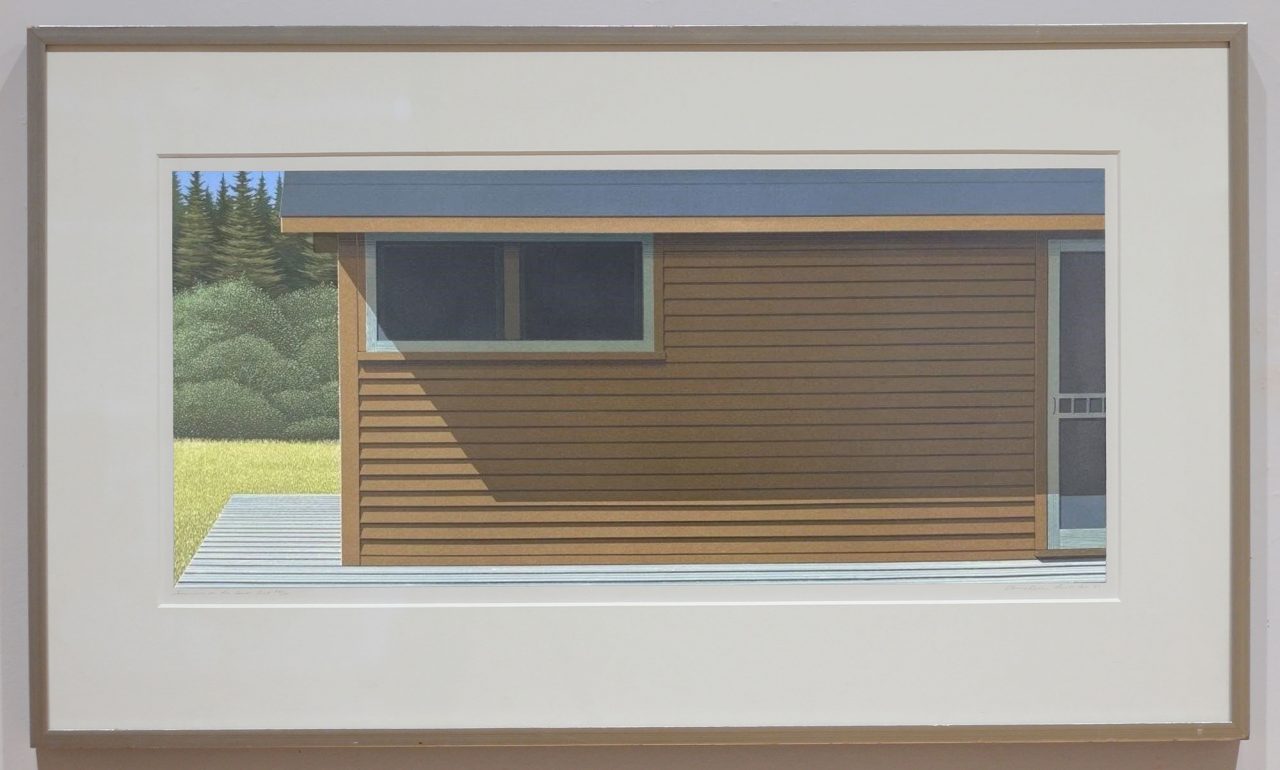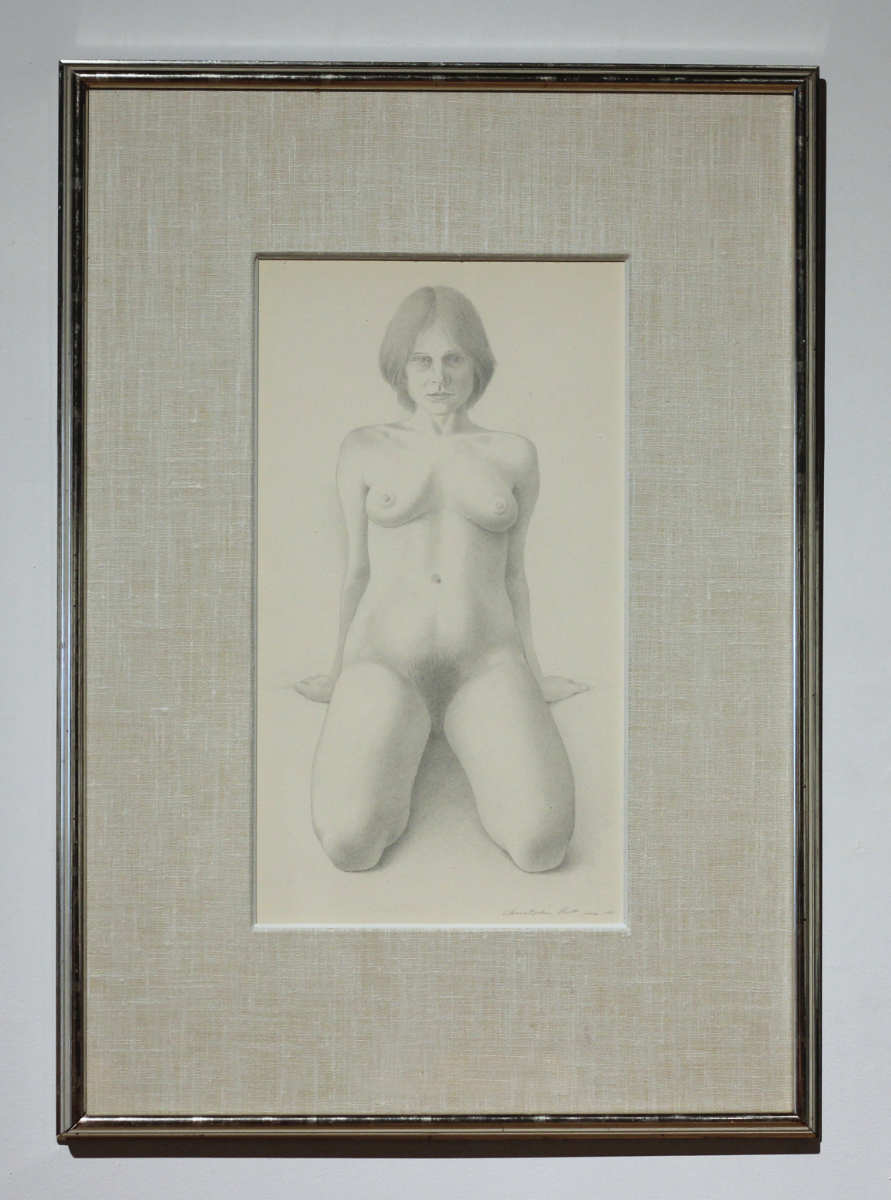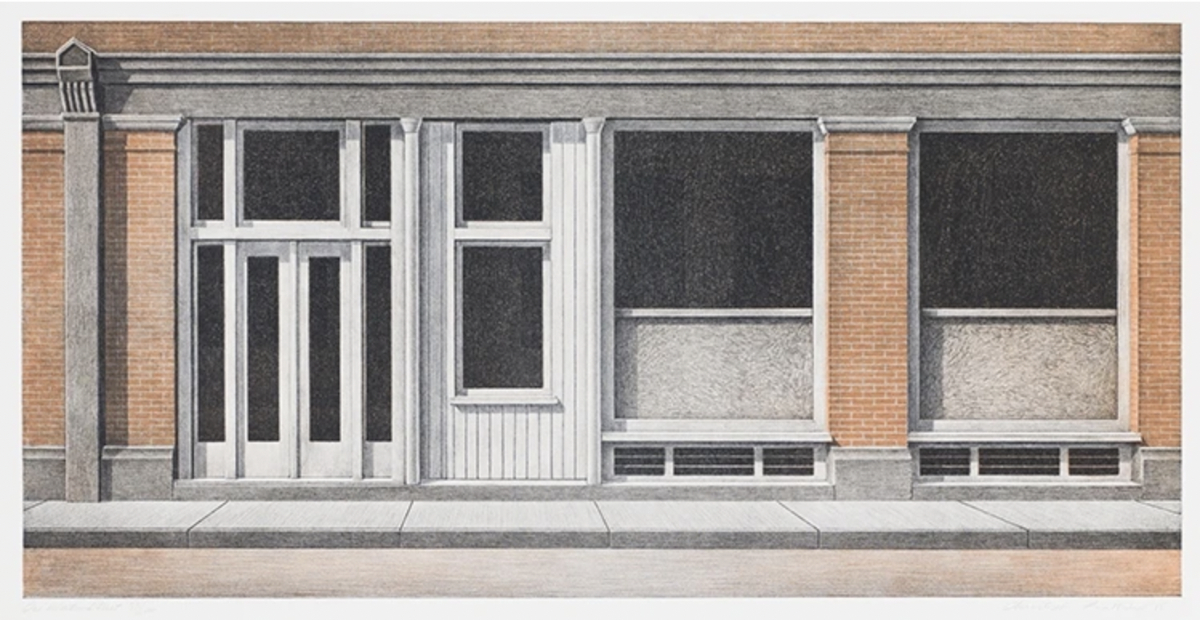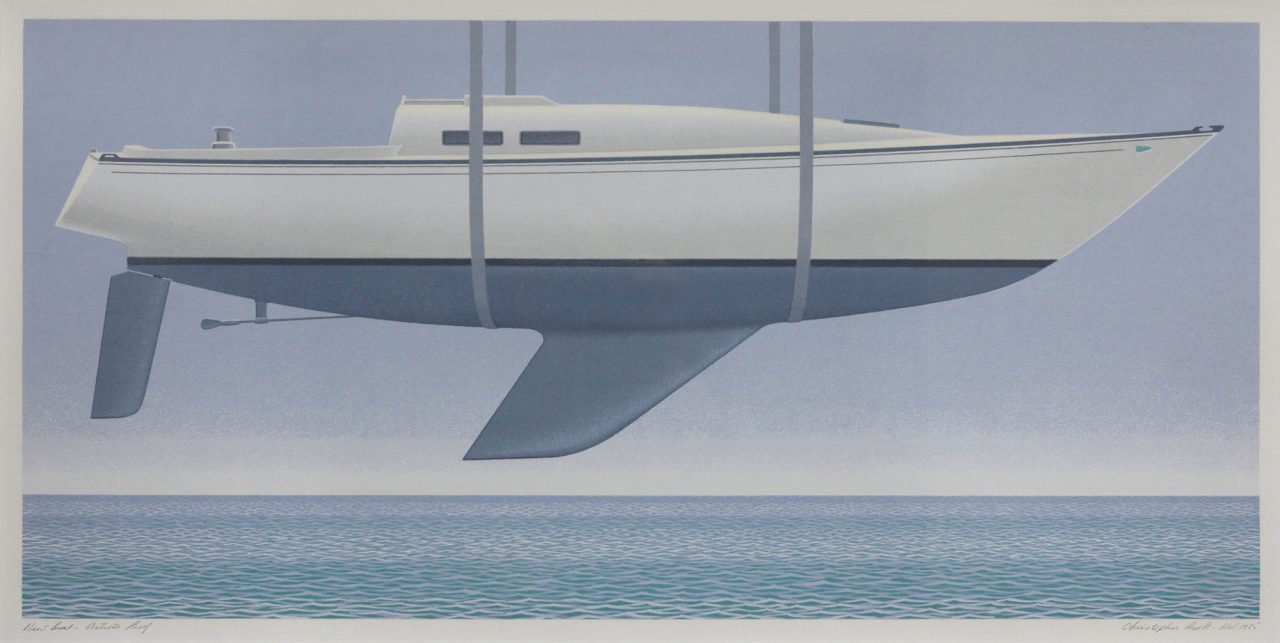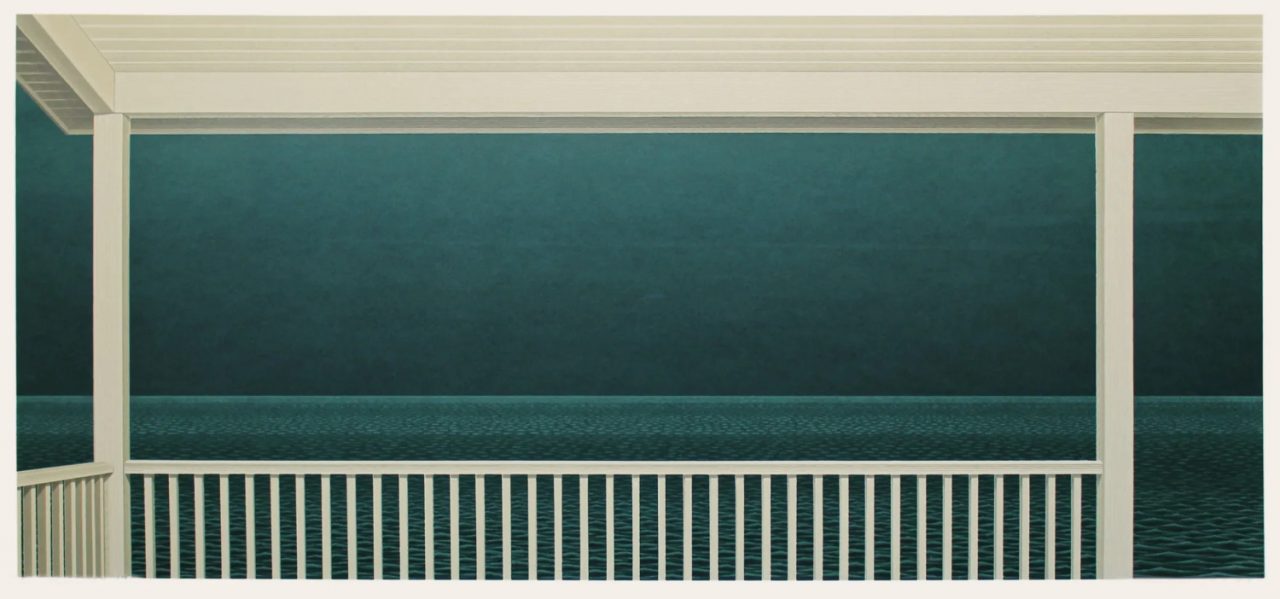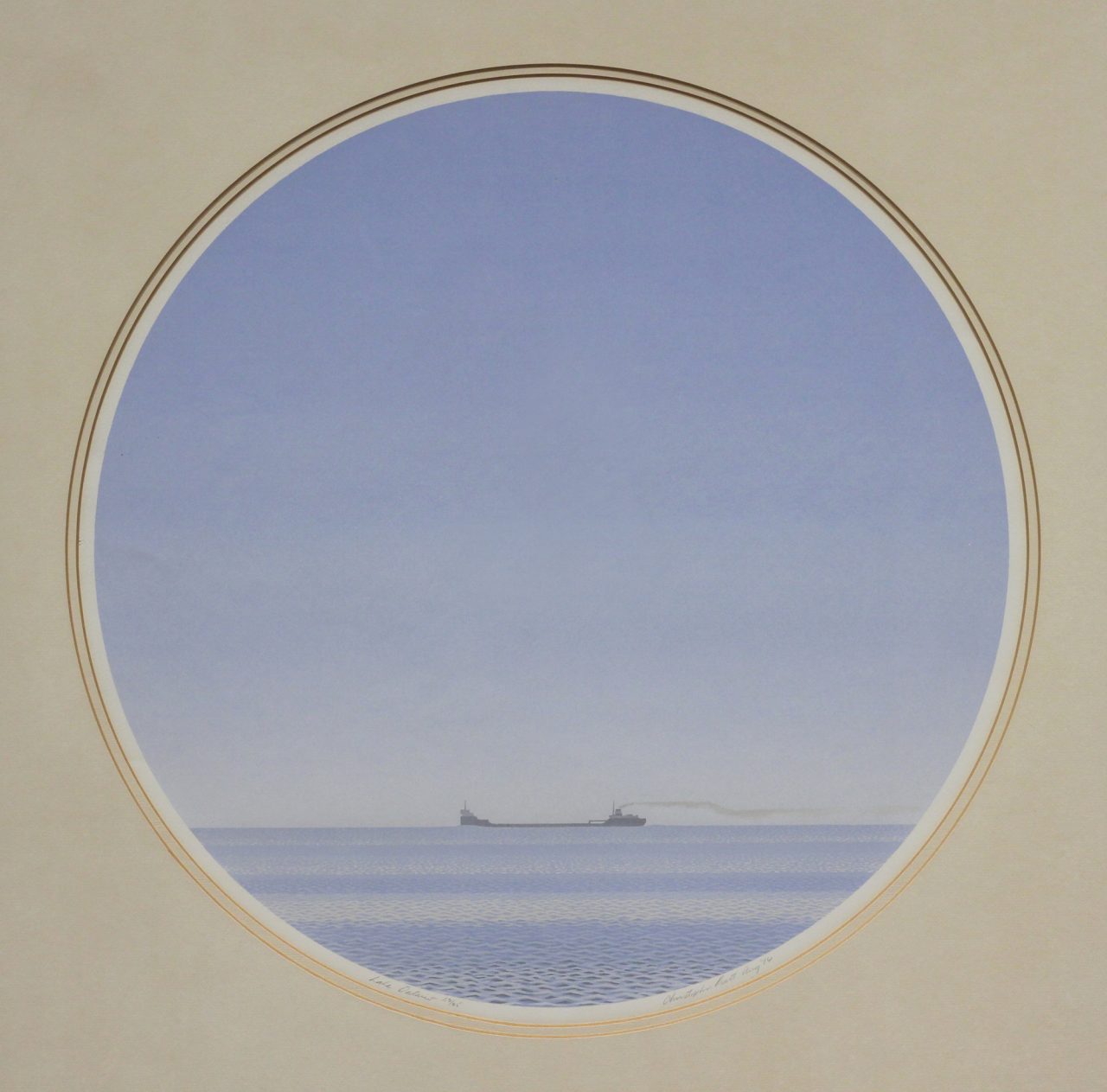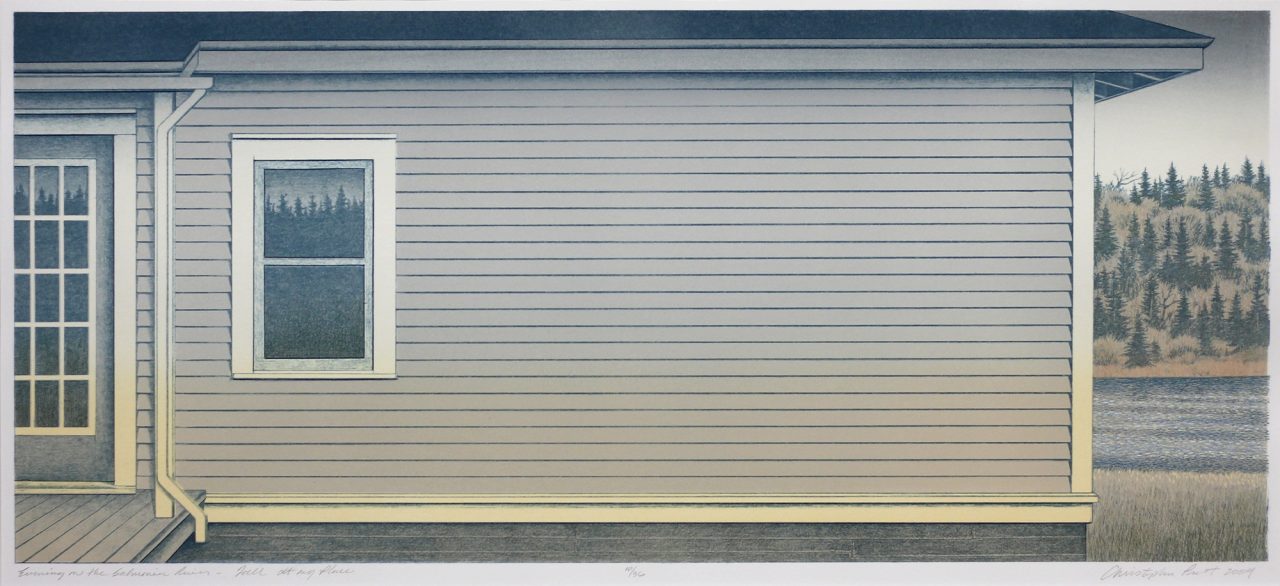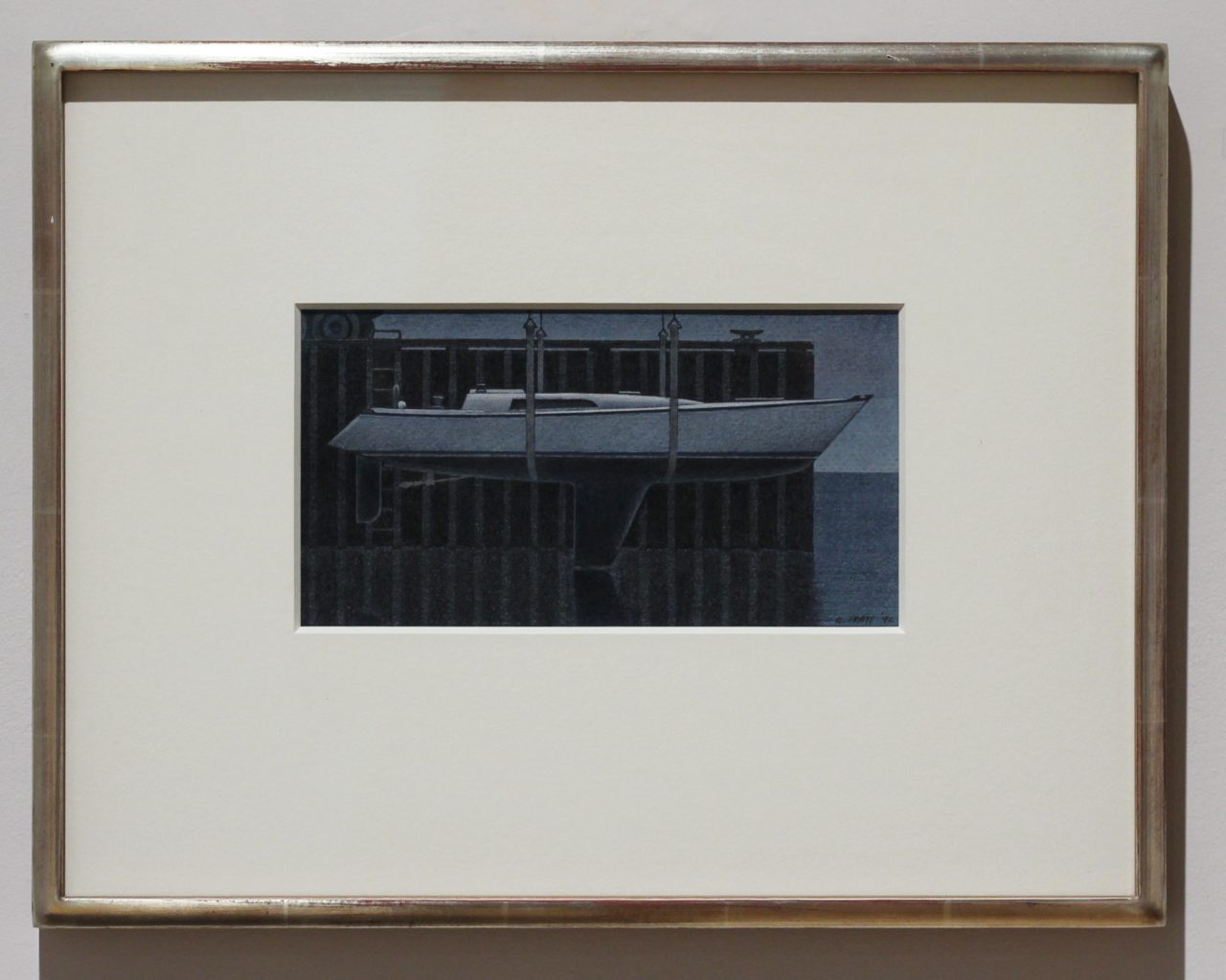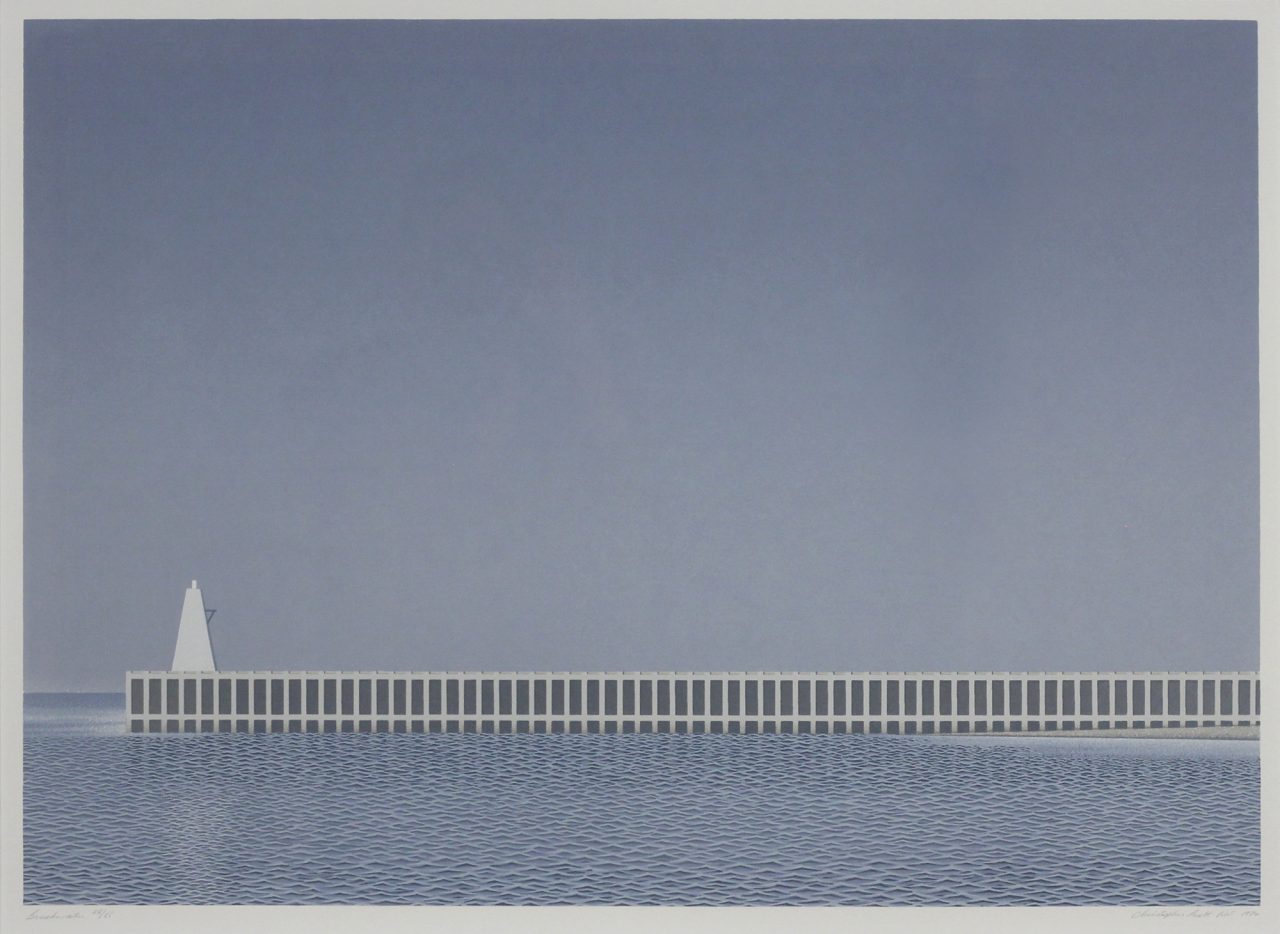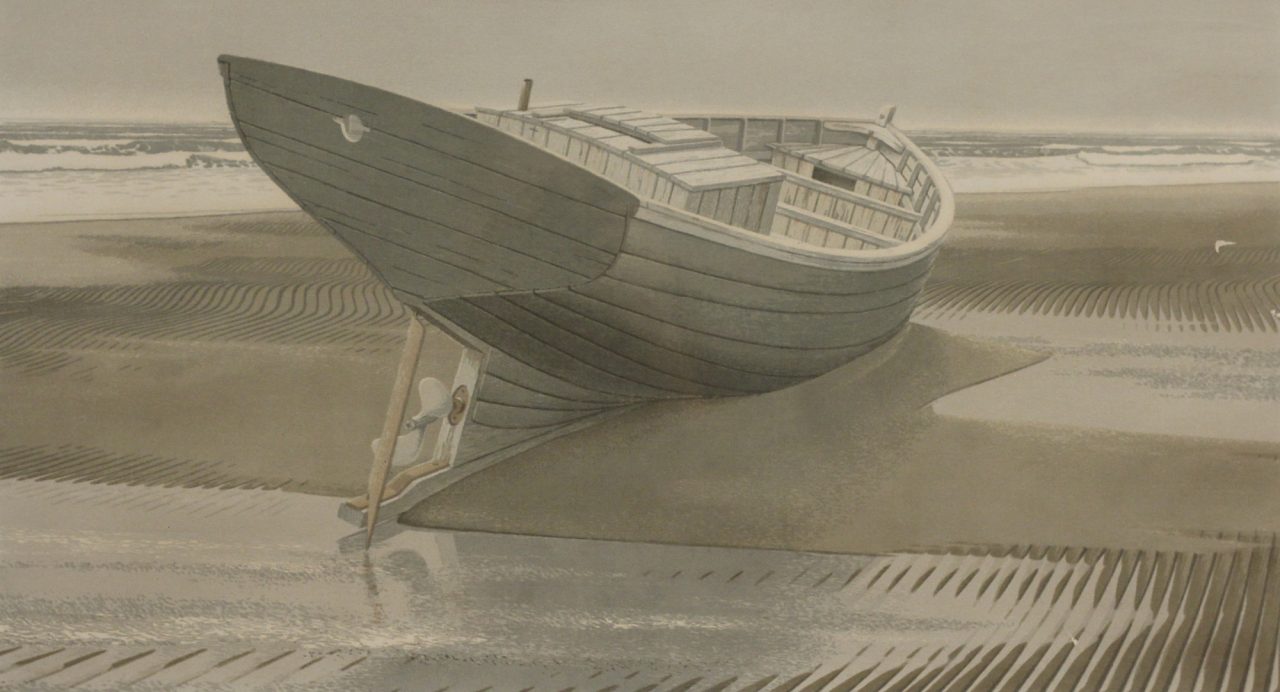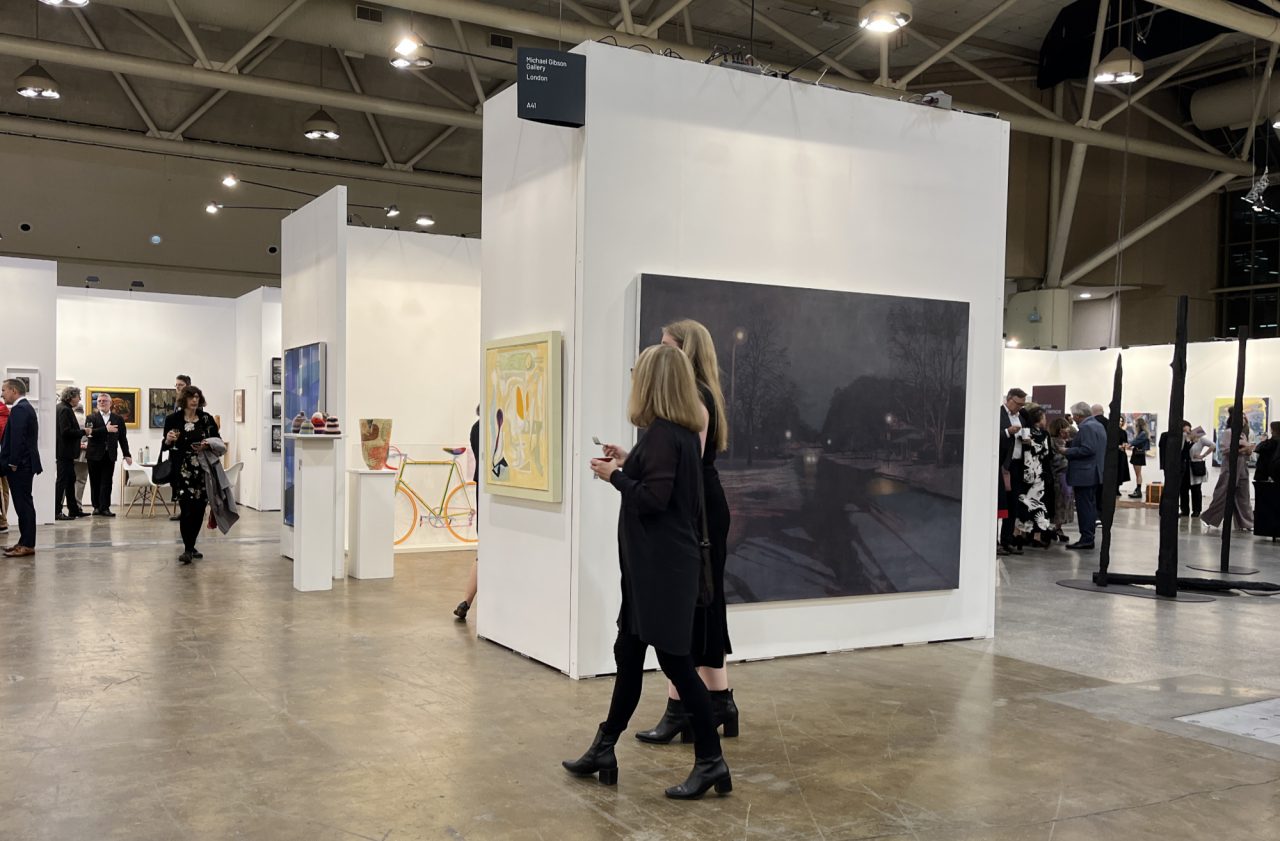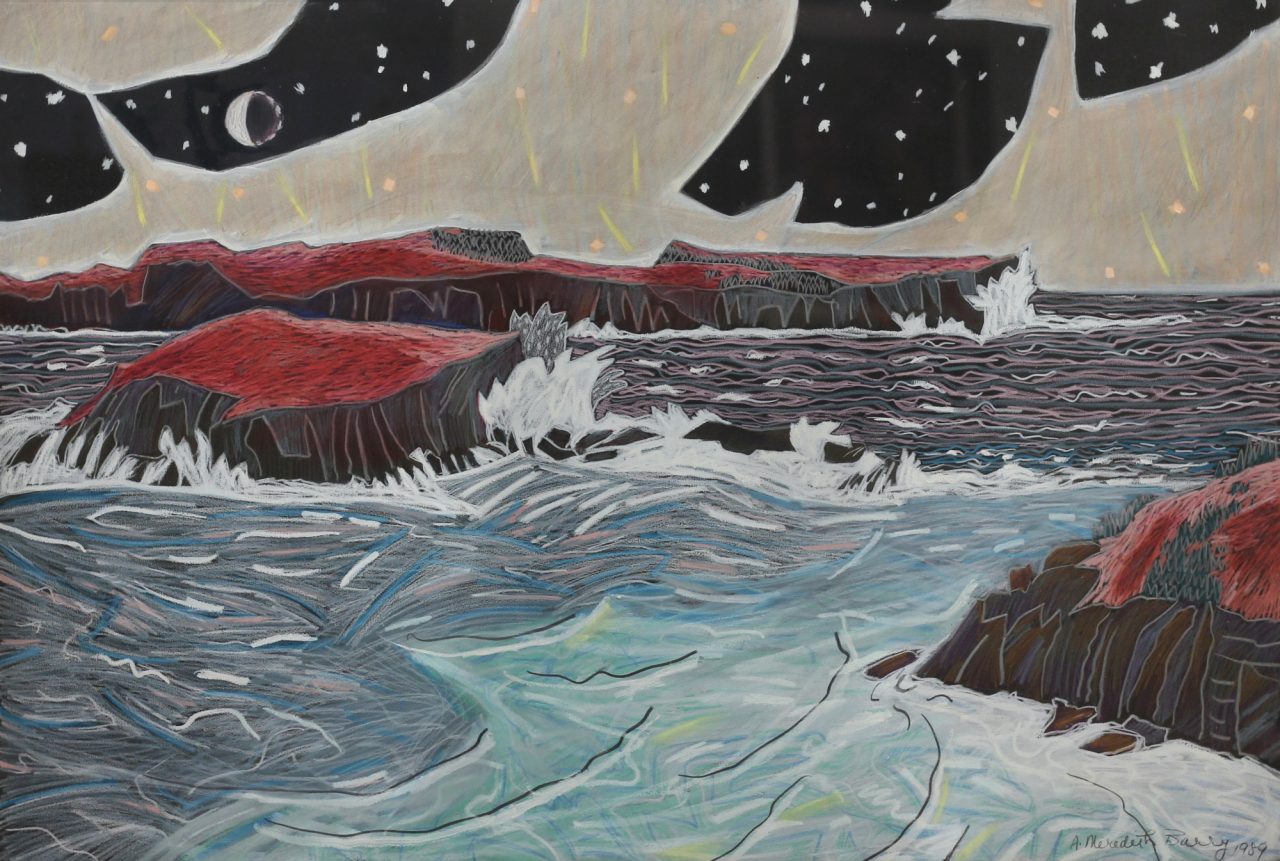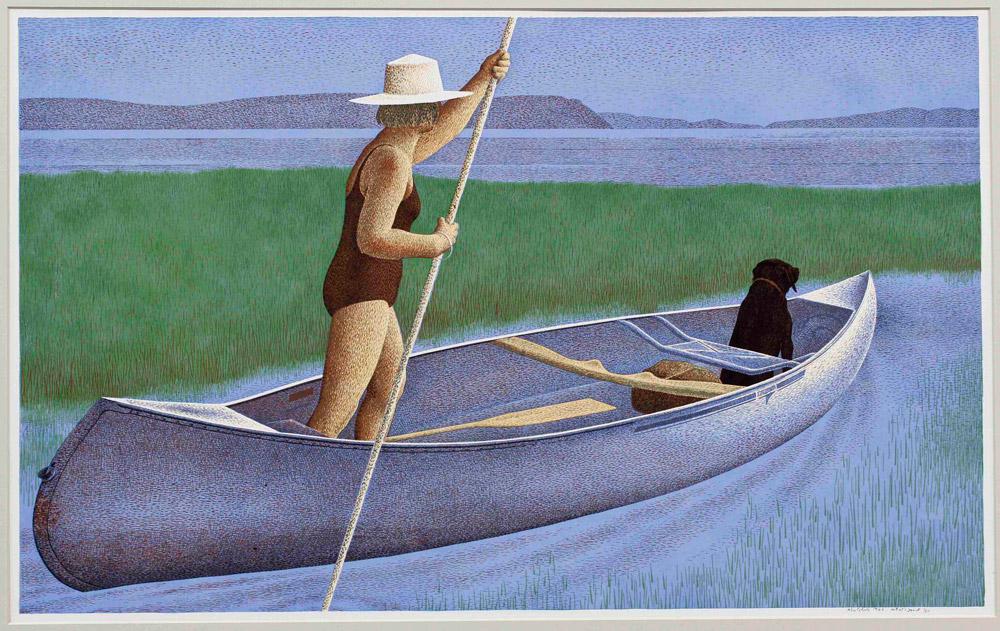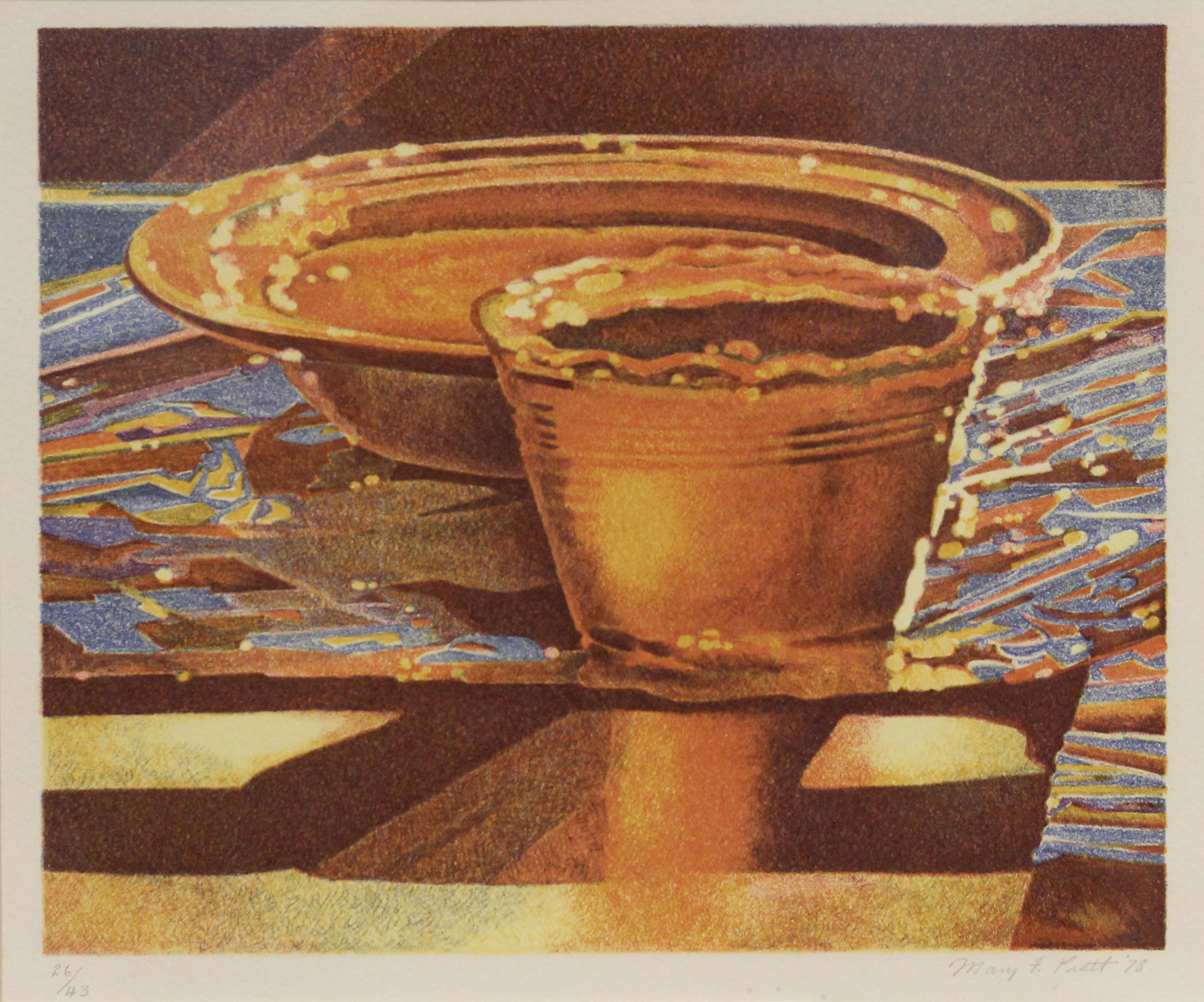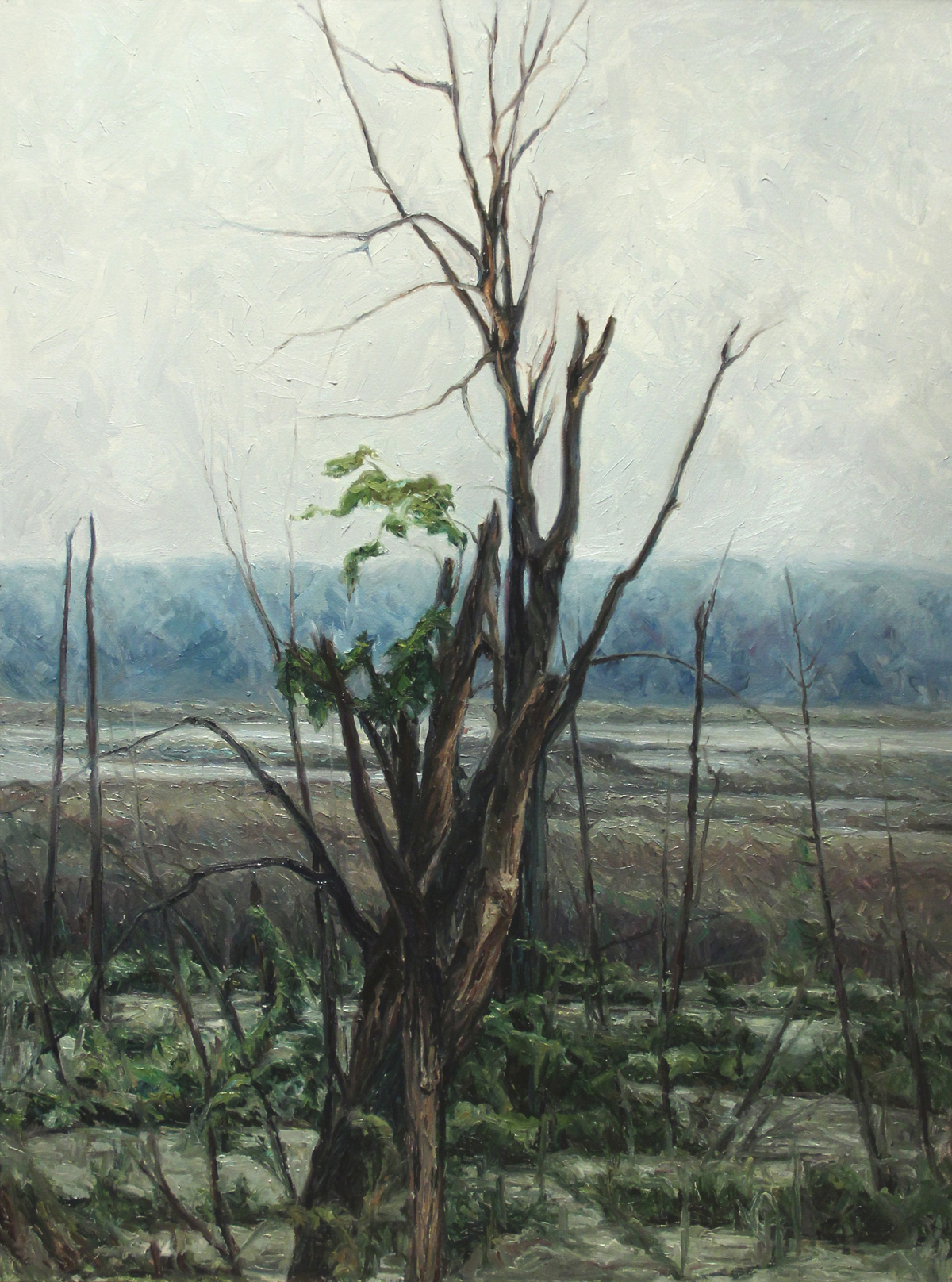Biography
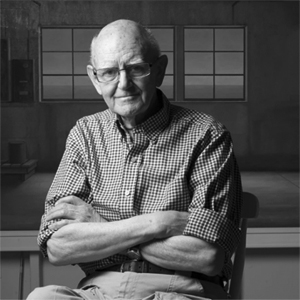
Christopher Pratt was one of Canada’s most prominent painters and printmakers. He lived in Newfoundland in St Mary’s Bay along the Salmonier River. Pratt was very aware of his identity as a Newfoundlander. The island, its culture, its geography and its weather had a strong impact on his work.
In his paintings Christopher Pratt explores many themes: landscapes, roadscapes, architecture, waterscapes, boats, interior spaces and the human figure. Through these works, Christopher Pratt presents his vision of Newfoundland and urges us to consider how progress and the modern world are transforming the island.
The images are largely the products of his imagination. They are infused with memories of people, places and events that have been filtered and clarified through his search for order and simplicity. In this way, they are situated between reality and fiction. The paintings have a timeless and idealized quality to them. Pratt achieves this by concentrating on the abstract elements of design. The surfaces are flat, the compositions are frontal. The paintings are very carefully organized and precisely executed. Every thing inessential is eliminated from the subject. Through abstraction the ordinary becomes the archetypal. Christopher Pratt has always believed that there is an immense presence in ordinariness. He celebrates the non-exotic, the anti-picturesque. Light is a very important element in Pratt’s work. In the 1970’s when he first saw Early Sunday Morning by the American painter, Edward Hopper, he began thinking about qualities of natural and artificial light.
Pratt’s work is not generally interpreted as political, and yet political concerns underlie many of his paintings. As a contemporary witness to the events and circumstances that are transforming Newfoundland and Labrador, many of his works can be understood as records of how traditional ways of life are changing. Deer Lake: Junction Brook Memorial, 1999 in the Gallery’s collection is a good example. This painting is a memorial to the Junction Brook River which disappeared when a dam was built to channel its water to the Deer Lake powerhouse.
Christopher Pratt first started painting water- colours in 1952. In 1953 he attended Mount Allison University in Sackville, New Brunswick as a student in pre-medicine. At Mount Allison he quickly became interested in Fine Arts, especially painting. He was encouraged to paint by Lawrence P. Harris and Alex Colville. Pratt also met his future wife, Mary (West) Pratt at Mount Allison University. From 1957-1959 Pratt studied at the Glasgow School of Art in Scotland. During the summers, he returned to Newfoundland to work as a construction surveyor at the American Naval Base at Argentia. The training he received in precise measuring was applied to his paintings. In 1959 Pratt returned to Mount Allison University to complete in 1961 a Bachelor of Fine Arts degree. During this period he began to make silkscreen prints. The early screen print Boat in Sand, 1961 in the National Gallery’s collection was produced at this time and included in the Gallery’s fourth Biennial Exhibition.
From 1961-63 Pratt worked as a curator and taught extension courses at the newly opened Memorial University Art Gallery (now the Art Gallery of Newfoundland and Labrador). His first solo exhibition took place at the Memorial University Art Gallery in 1965.
Over the years Pratt has exhibited both nationally and internationally, including from a long list of exhibitions: New York, 1976, Canada House Cultural Centre Gallery in London, England which traveled to Paris, Brussels and Dublin from 1982-83, 49th Parallel Gallery in New York in 1988, National Gallery of Canada, 2005.
In 1992, a fire destroyed Pratt’s studio. This event had a strong effect on Pratt’s later work. The paintings executed from 1992 are much more immediate and sometimes have an air of foreboding. In them, Pratt captures the events that took place recently in his life. He also introduced a new theme at this time: the road paintings are based on his travels. His love of sailing, another source of inspiration for his art, has been a constant in his work.
Throughout his career, Pratt has received many awards and honours. In 1965, at the age of 30, Pratt became an Associate of the Royal Canadian Academy of Arts (ARCA) and a member of the Canadian Society of Graphic Art. In 1969, he was a member of the Canada Council Visual Arts Jury. In 1973 Pratt was named an Officer of the Order of Canada and in 1983 he became a Companion of the Order.
Pratt has served on many committees and councils, including the Federal government’s Stamp Design Advisory Committee (1972-1975) and the Board of the Canada Council for the Arts (1975-1981). In 1980, Pratt designed the Provincial Flag of Newfoundland and Labrador.
He passed away in 2022.
(Source: National Gallery of Canada, Website / Photo: Ned Pratt)

